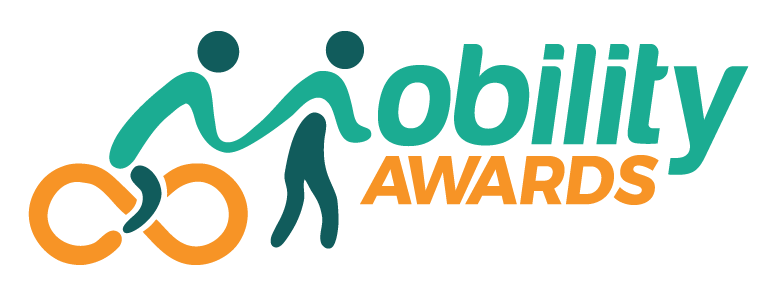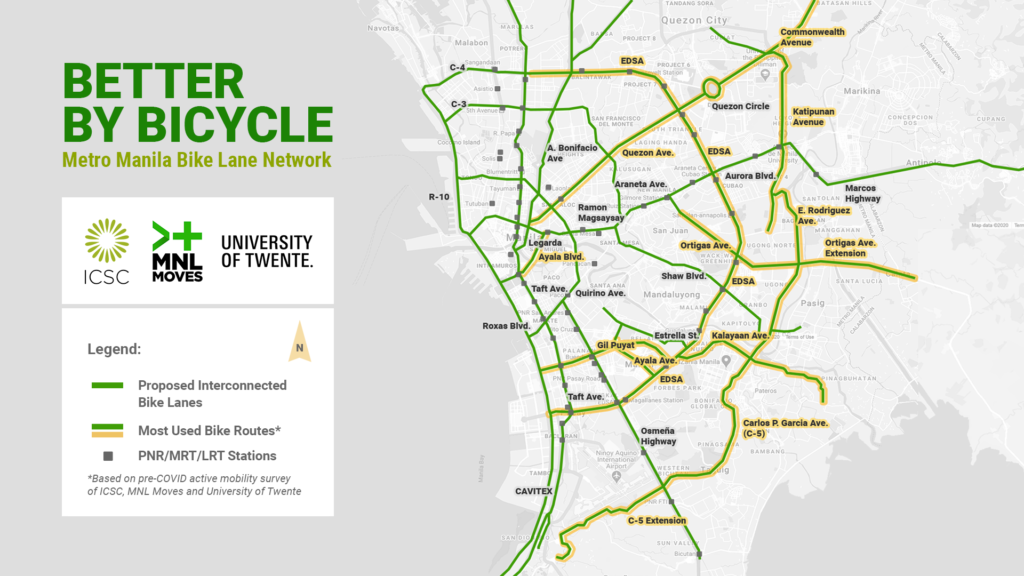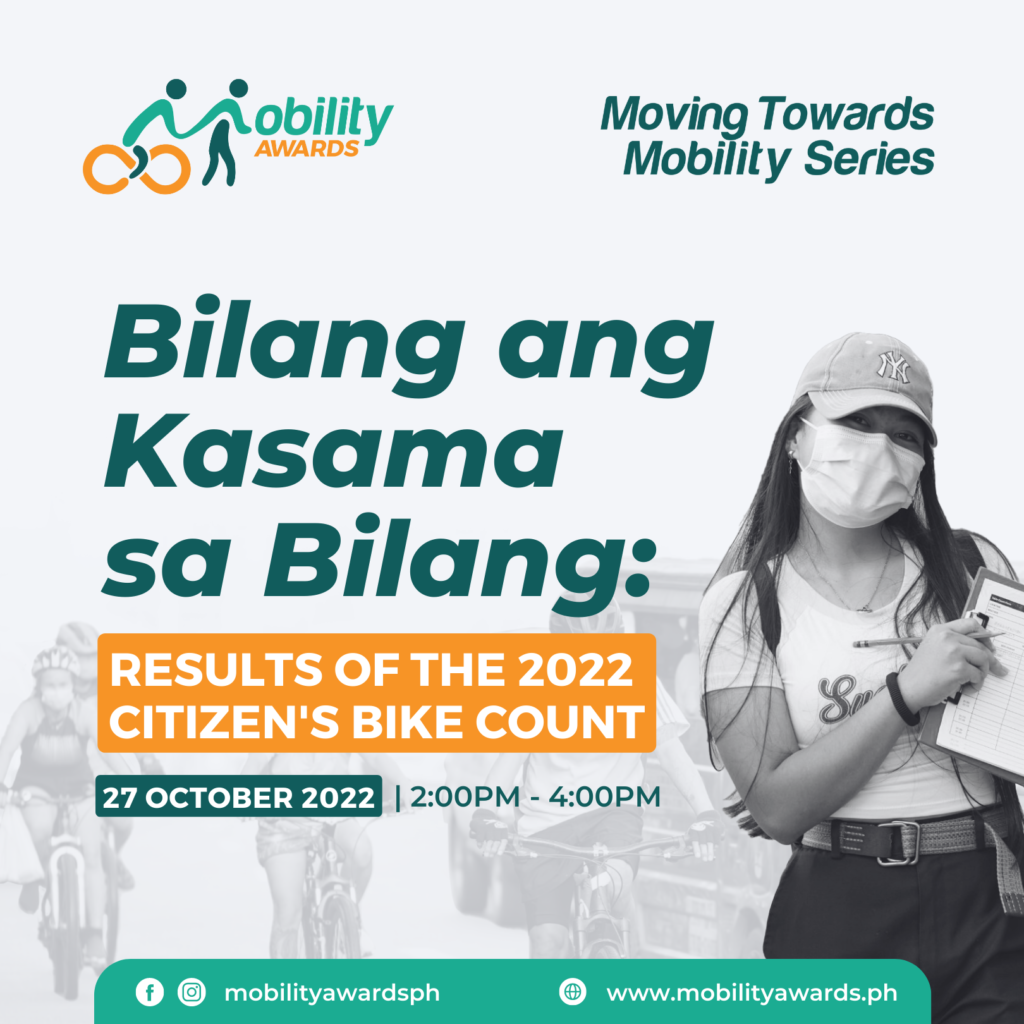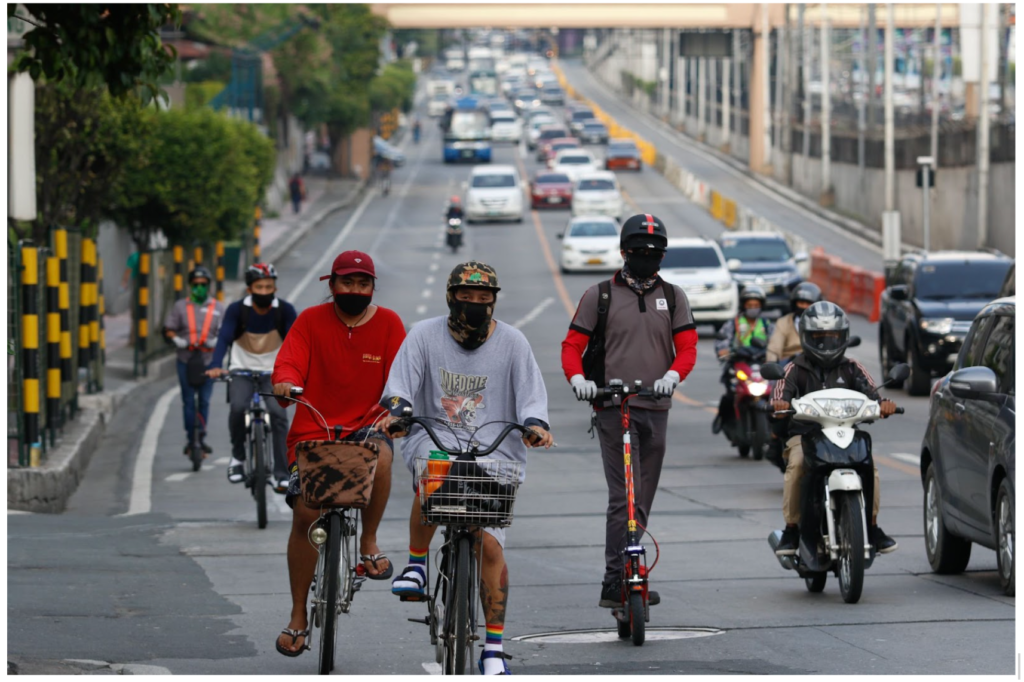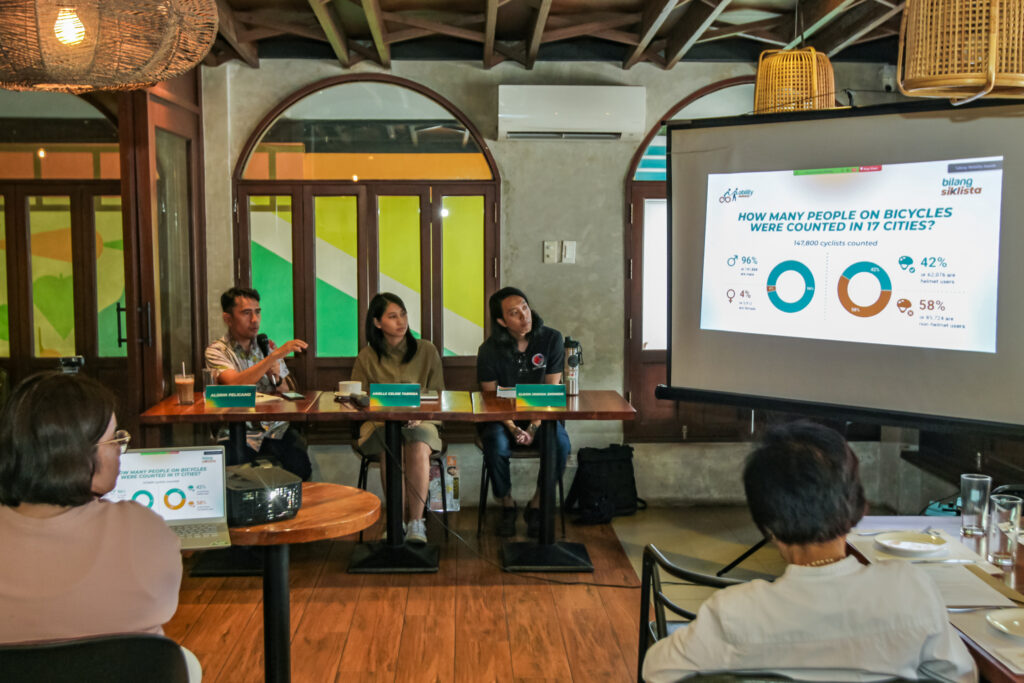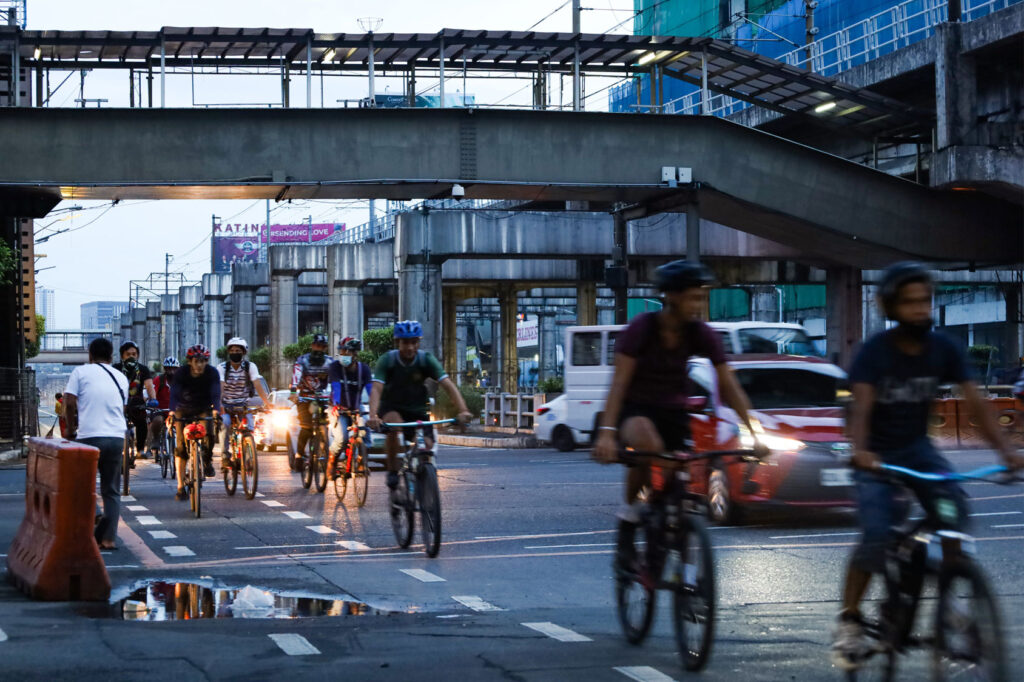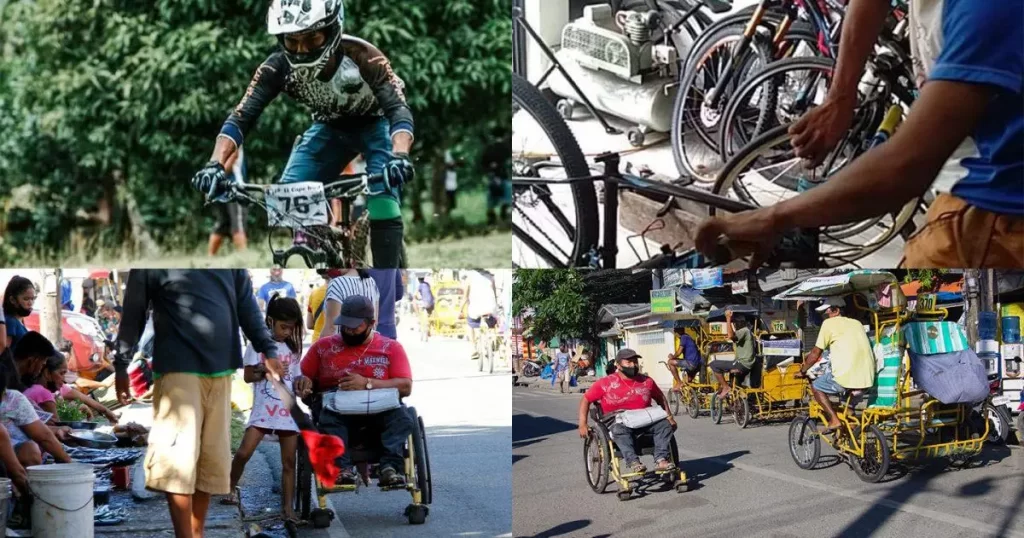Active mobility refers to walking, cycling and using personal mobility devices as a means of transportation, in combination with the use of public transport.
Active mobility can and should be made easier and safer in Metro Manila. Moving people, not cars, must be the priority – 88% of households in Metro Manila and the rest of the Greater Manila Area do not own cars, while the remaining 12% own at least one (JICA-MUCEP, 2015).
The Institute for Climate and Sustainable Cities (ICSC), in partnership with MNL Moves and University of Twente, conducted an active mobility survey throughout Metro Manila from November to December 2019. It collected 407 responses on active commuters’ perceptions on the current state of active mobility in Metro Manila and what should be done to make the metropolis more cyclable and walkable.
Based on our survey, these are the primary recommendations to improve active mobility in Metro Manila:
- Enable cycling and pedestrian infrastructure
- Create an interconnected bike lane network, and connect sidewalks and foot paths, across the metro
- Set up more bike racks, storage, and other cycling-friendly facilities
- Line bike and walk paths with shady trees and lighting
- Change mindsets, priorities, and policies to move people, not cars
- Generate more data to support planning and policies
All these recommendations can be elements of a sustainable transport plan that integrates and operationalizes active mobility in the cities, consistent with the National Transport Policy. Eventually a framework could then hopefully be built to promote active mobility in Metro Manila, as well as in the Philippines.

